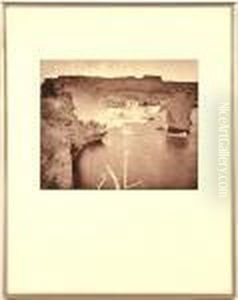Timothy O Sullivan Paintings
Timothy H. O'Sullivan was a prominent American photographer widely recognized for his work during the American Civil War and the Western United States. Born in 1840 in New York City to Irish immigrants, O'Sullivan's early life is not thoroughly documented, but he is believed to have been apprenticed to Mathew Brady, a famous photographer of the time, where he honed his skills in photography.
During the Civil War, O'Sullivan worked first under Mathew Brady and later with Alexander Gardner, another well-known photographer. In this period, he distinguished himself as a courageous and talented photographer, capturing some of the most iconic images of the conflict. His photographs from battles such as Gettysburg and the siege of Petersburg provided a stark, unglamorous view of the war, which was a departure from the romanticized paintings that were common at the time.
After the war, O'Sullivan turned his attention to the American West as part of the geological surveys led by Clarence King and Lt. George M. Wheeler. In these expeditions, which aimed to chart and explore the largely unknown territories, O'Sullivan used his camera to record the landscapes, indigenous peoples, and geological formations. His photographs from this period are among the first to capture the vastness and rugged beauty of places like the Grand Canyon, Yosemite, and the Rocky Mountains. O'Sullivan's work played a crucial role in documenting the American frontier and has been credited with influencing public perception and conservation efforts.
Tragically, Timothy O'Sullivan's life was cut short when he died from tuberculosis at the age of 42 in 1882. Despite his relatively brief career, his contributions to the field of photography were significant. He is remembered for his pioneering work in photojournalism and his ability to convey the realities of war and the majesty of the American landscape with profound clarity and artistry. His photographs remain a valuable historical resource and continue to be celebrated in exhibitions and publications.
